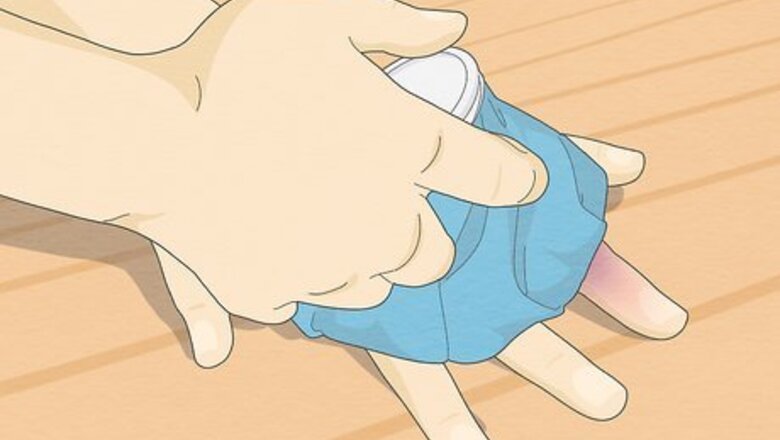
views
- Treat a jammed finger at home by icing it and elevating it. Tape your jammed finger to another finger to splint it while it heals.
- Pop your jammed finger by moving it up and down or gliding it from left to right.
- Seek medical attention if your pain and swelling gets worse, if your finger is tingly or turns white, or if your finger is not back to normal after 2 weeks.
Home Remedies
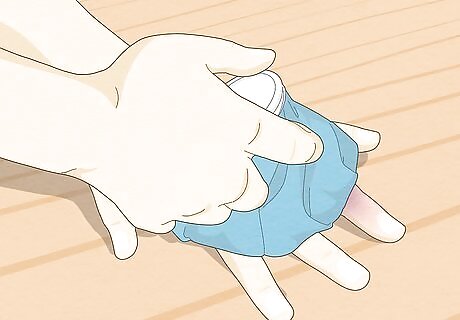
Ice your finger or soak it in cold water for 15 minutes. Ice and cold water help the swelling go down and reduce pain and irritation. Apply an ice pack or even a bag of frozen vegetables to the finger. Or, dip your finger in cold water. Leave it there for 15 minutes, then let your finger get back up to room temperature. Don't forget to wrap ice in a thin towel before applying it to your finger so you don't get ice burn or frostbite. Using ice for too long can harm your skin and make your finger hurt worse. Be sure to take the ice off after 15 minutes to prevent further injury. Use ice once every hour as your finger heals.
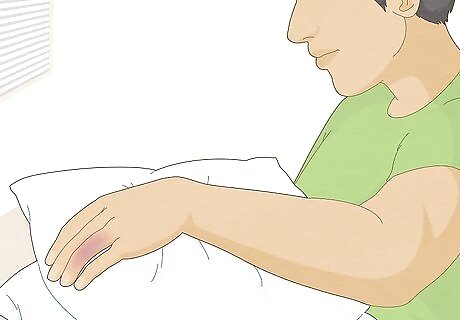
Elevate your finger to reduce swelling. Keep your finger raised above your heart to reduce inflammation. Typically, the pain in your finger is caused by swelling. You can reduce that pain by keeping your hand and finger elevated whenever possible. When you’re sitting down, place your hand on a pillow to keep it elevated without expending too much energy.
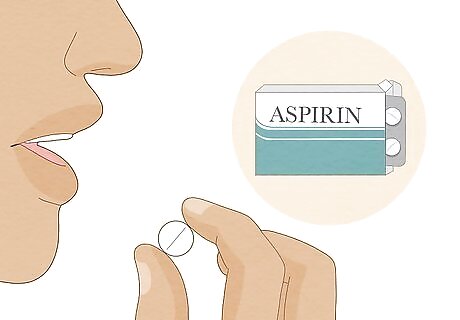
Take anti-inflammatory medication to relieve pain and irritation. Purchase an over-the-counter anti-inflammatory, like aspirin, ibuprofen (Advil, Motrin) or naproxen (Aleve). Follow the dosage instructions on the bottle to reduce pain and swelling in your finger. Do not give aspirin to children under 18, due to the risk of Reye's syndrome. As an alternative to taking any pills, consider applying an anti-inflammatory or pain-relieving cream or gel to your jammed finger joint. The cream or gel will absorb locally and eliminate the risk of any stomach problems.
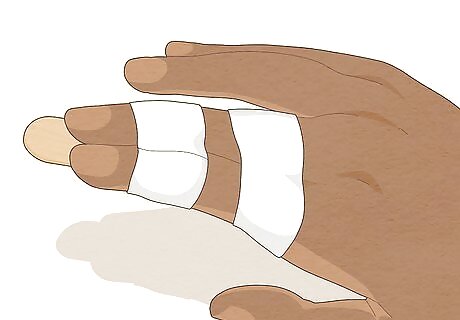
Buddy tape the injured finger to keep it still as it heals. Taping your finger to an adjacent finger will keep it stabilized and immobile as it heals. To do this, hold your 2 fingers side by side, and use gauze or medical tape to wrap them firmly together (but not so firmly that you cut off circulation). Change the gauze or tape once a day, and leave the buddy tape on for 3 to 5 days. To provide a little more support for your jammed finger, you can use a wooden craft stick along with the tape. After 3 to 5 days, take the tape off and see how your finger feels. If it’s still very sore or you can’t bend or straighten it, seek medical attention.
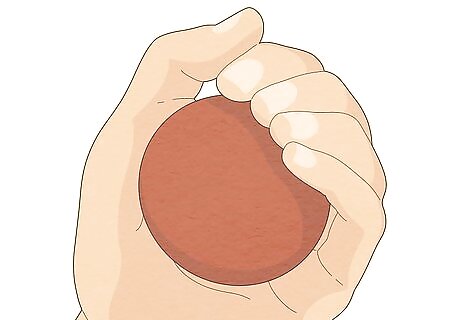
Do strength exercises after your finger heals. Typically, a jammed finger will heal on its own after 1 to 2 weeks. After that, try doing strength exercises, like squeezing your hand into a fist or squeezing a tension ball. These exercises will help get your finger strength back to normal after a couple of days. You may have some weakness in your injured finger for up to 1 week after it heals.
Popping a Jammed Finger
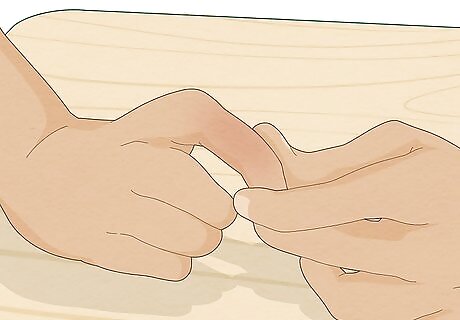
Hold your jammed finger with 1 hand. If your jammed finger has been bothering you for a while now, you may need to “pop” it. Keep your hand with the jammed finger steady on a table or counter, then grab the top half of your finger with your other hand. Popping a jammed finger is usually easier if someone else does it for you. However, you can pop it yourself, too. If you don’t feel comfortable popping your own finger, visit a chiropractor. They can do a joint adjustment and assess your finger professionally. Some people recommend unjamming a finger by pulling it, while others are firmly against it. If you’re not sure whether you should pop your injured finger or not, talk to your doctor.
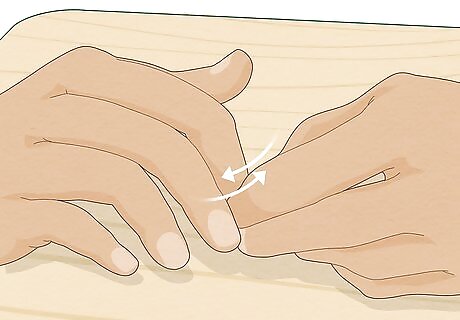
Move the top of your finger up and down. Keeping your hand with the jammed finger steady, grab your jammed finger and move it up and down at the 2nd or middle knuckle. If this helps your jammed finger, you may feel instant relief or even a popping sensation. If this doesn’t help your jammed finger or causes you pain, don’t worry—there are 2 ways to pop a jammed finger. Move onto the next step.
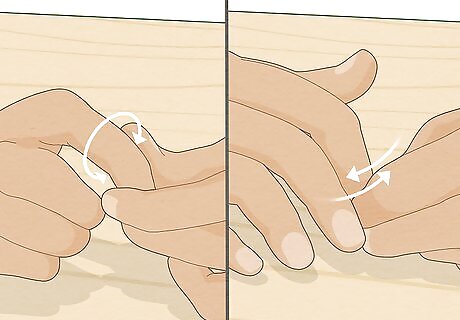
Glide the tip of your finger back and forth. In the same position with your hand firmly grasping the tip of your jammed finger, slowly slide the finger to the right and left. Shift the bone and joint back and forth to provide your jammed finger some relief. You can also try gently twisting your finger back and forth.
When to Seek Medical Treatment
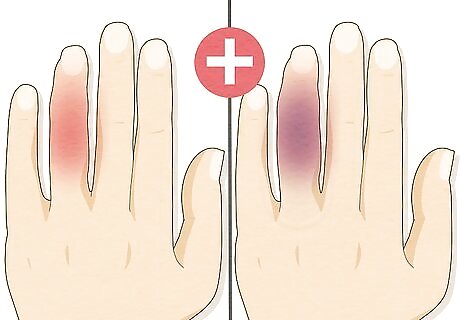
Your pain or swelling gets worse. If your pain, irritation, or swelling ramps up after a couple of days or hours, it could mean that your finger is fractured. Get it checked out by a doctor to see what kind of care it needs. Instead of a jammed finger, you might have a small hairline or stress fracture in the long bones of your finger, or an avulsion fracture closer to the joint.

You are still in pain after 3 days. In general, jammed fingers will stop hurting after a couple of days or so. If you’re still in pain after 3 days, you may have a sprained or broken finger. Your finger may feel sore or irritated for 2 weeks or so, but a simple jammed finger won’t cause terrible pain for more than 3 days.

Your finger feels numb, tingly, cold, or turns white. Any of these symptoms could mean that the blood flow to your finger is being constricted. Head to the doctor so they can check it out before any damage is done to the finger. You should also seek medical care if your finger turns blue or purple.
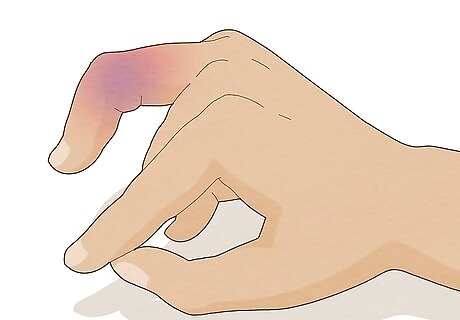
You cannot bend or straighten your finger after 2 weeks. Jammed fingers are typically not serious, and most will return to normal after 14 days. If you still can’t use your finger to its full function after 2 weeks, go to the doctor for an x-ray. Most jammed fingers can be treated without surgery. However, if your injury is serious, your doctor may recommend surgical options. Other treatment options include steroid injections or physical therapy.













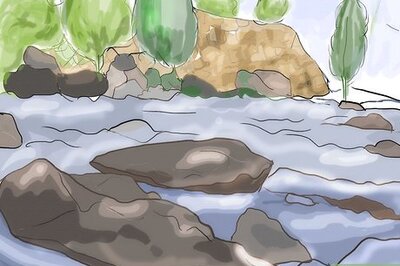


Comments
0 comment